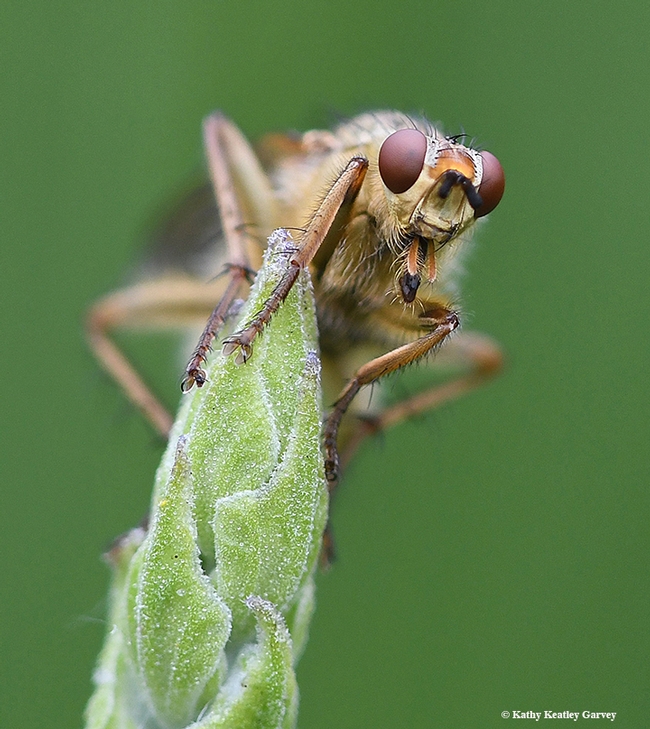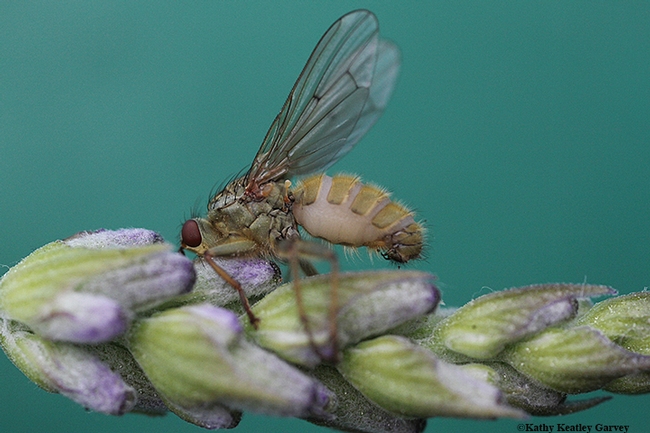So there we were, on Mother's Day, looking at the yet-to-bloom English lavender in our yard.
And there it was, something golden staring back at us.
It was showing a face that "only a mother could love"--or an entomologist or an insect enthusiast.
Scathophaga stercoraria, the golden dung fly. A red-eyed blond fly.
It's a beneficial insect. The larvae are often found in the feces of large animals, including horses, cattle, sheep, deer and wild boar, where the insect breeds. (Note: We have no horses, cattle, sheep, deer or wild boar near us!) The larvae eat the dung, making this insect important to natural decomposition.
The adult is a predator, it hunts for flies and other small insects. The adults also sip nectar, just like honey bees and other pollinators. Nearby was another golden dung fly, dead. Art Shapiro, UC Davis distinguished professor of evolution and ecology, looked at its swollen belly and said it died "from entomophagous fungus--perhaps the same one that 'glues' houseflies to window panes."
For more information on these fascinating insects, check out the BugGuide.Net entry on the golden dung fly. The insect was first described in 1758 by Carolus Linnaeus as Musca stercoraria, according to BugGuide.Net.
Attached Images:

A golden dung fly, Scathophaga stercoraria, perched on lavender, stares at the photographer on Mother's Day. (Photo by Kathy Keatley Garvey)

This golden dung fly, dead, was found on lavender next to live flies. Art Shapiro, UC Davis distinguished professor of evolution and ecology, looked at its swollen belly and said it died "from entomophagous fungus--perhaps the same one that 'glues' houseflies to window panes."(Photo by Kathy Keatley Garvey)